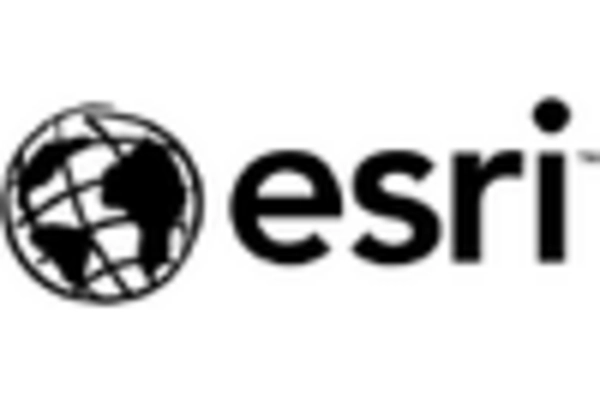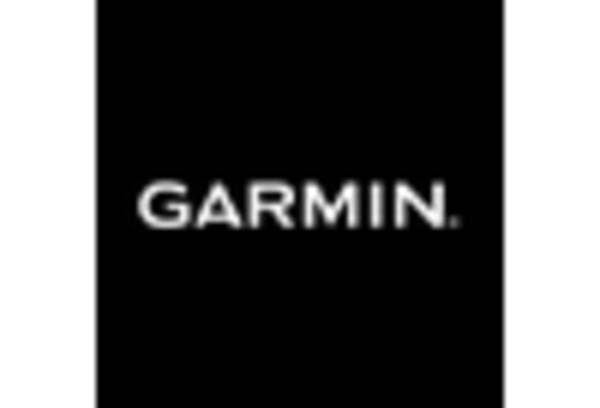The position tracking-system market in Europe is characterized by a dynamic competitive landscape, driven by technological advancements and increasing demand for precision in various sectors such as logistics, agriculture, and urban planning. Key players like Trimble (US), TomTom (NL), and HERE Technologies (NL) are at the forefront, each adopting distinct strategies to enhance their market presence. Trimble (US) focuses on innovation through continuous investment in R&D, aiming to integrate advanced analytics and AI into their tracking solutions. Meanwhile, TomTom (NL) emphasizes partnerships with automotive manufacturers to embed their tracking systems into vehicles, thereby expanding their reach in the automotive sector. HERE Technologies (NL) is leveraging its strong data analytics capabilities to provide tailored solutions for smart cities, indicating a shift towards urban-centric applications in the market.
The business tactics employed by these companies reflect a concerted effort to optimize operations and enhance customer engagement. Localizing manufacturing and supply chain optimization are prevalent strategies, allowing companies to respond swiftly to regional demands. The market structure appears moderately fragmented, with several players vying for dominance, yet the collective influence of major companies like Garmin (US) and Hexagon (SE) contributes to a competitive environment where innovation and service quality are paramount.
In September 2025, Garmin (US) announced a strategic partnership with a leading logistics firm to develop a new tracking system that integrates real-time data analytics. This collaboration is poised to enhance operational efficiency for logistics providers, showcasing Garmin's commitment to expanding its footprint in the supply chain sector. The strategic importance of this partnership lies in its potential to streamline logistics operations, thereby improving service delivery and customer satisfaction.
In October 2025, Hexagon (SE) unveiled a new suite of tracking solutions designed specifically for the construction industry. This launch reflects Hexagon's strategy to cater to niche markets, where precision and real-time data are critical. By focusing on the construction sector, Hexagon aims to differentiate itself from competitors and establish a stronghold in a growing market segment. The introduction of these solutions is likely to enhance project management and operational efficiency for construction firms.
In November 2025, Esri (US) announced the integration of its tracking systems with advanced GIS capabilities, enhancing spatial data analysis for urban planners. This move underscores Esri's focus on digital transformation and its commitment to providing comprehensive solutions that address the complexities of urban development. The strategic significance of this integration lies in its ability to offer planners a more holistic view of urban dynamics, thereby facilitating informed decision-making.
As of November 2025, the competitive trends in the position tracking-system market are increasingly defined by digitalization, sustainability, and AI integration. Strategic alliances are becoming more prevalent, as companies recognize the value of collaboration in enhancing technological capabilities and market reach. Looking ahead, competitive differentiation is likely to evolve, shifting from traditional price-based competition to a focus on innovation, technology, and supply chain reliability. This transition suggests that companies that prioritize R&D and strategic partnerships will be better positioned to thrive in an increasingly complex market.
















Leave a Comment